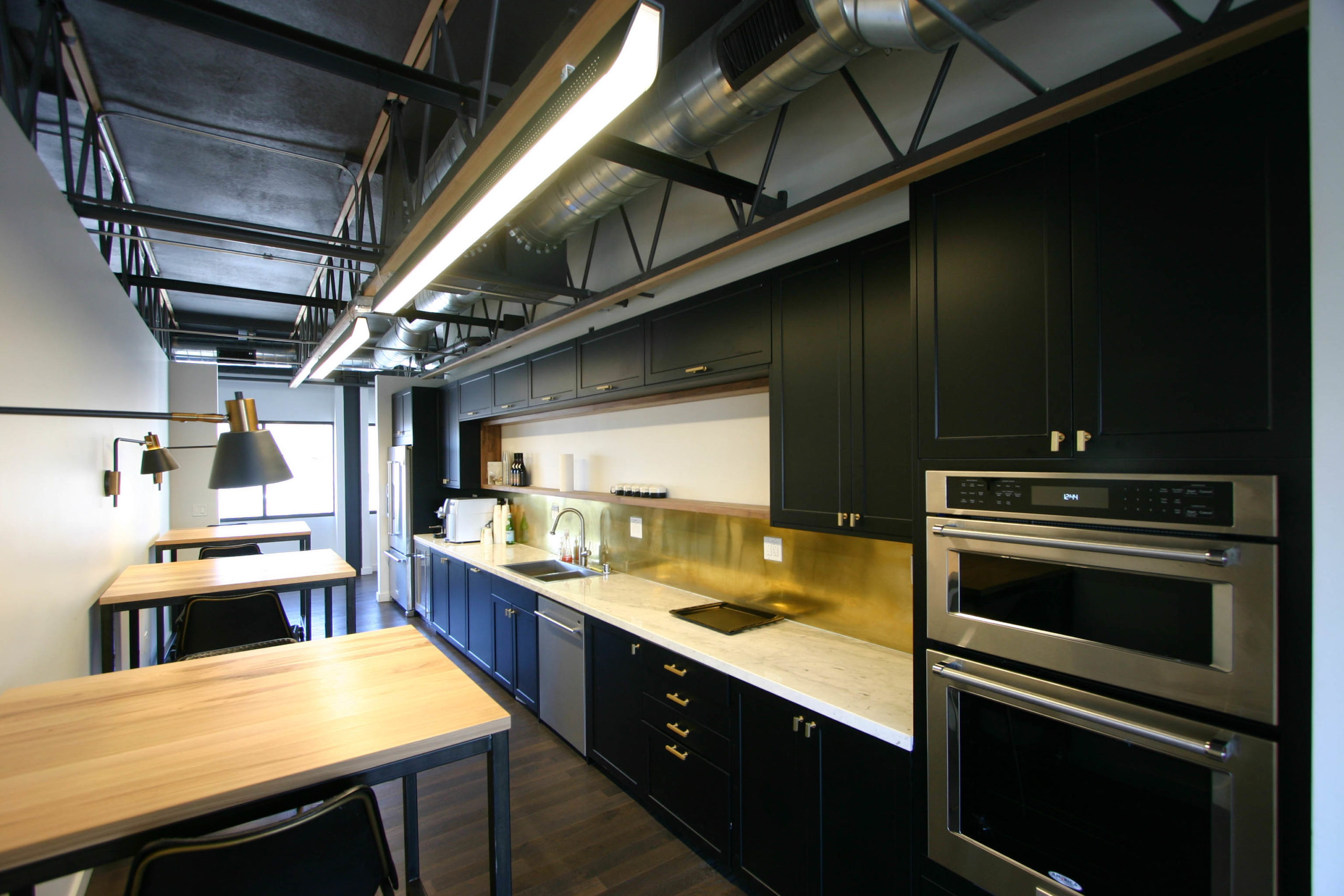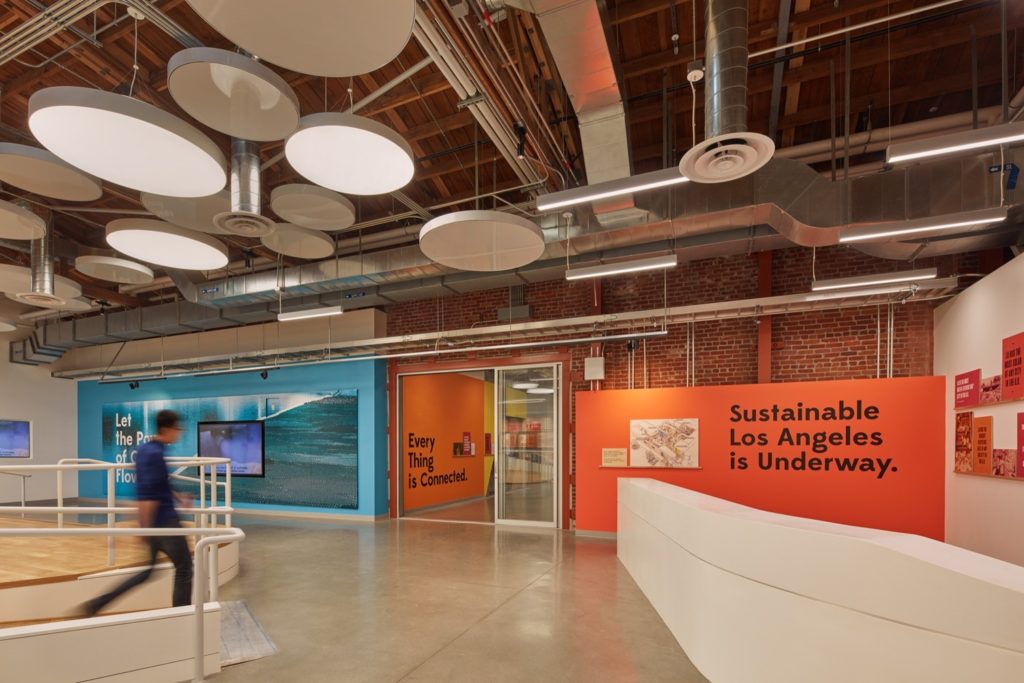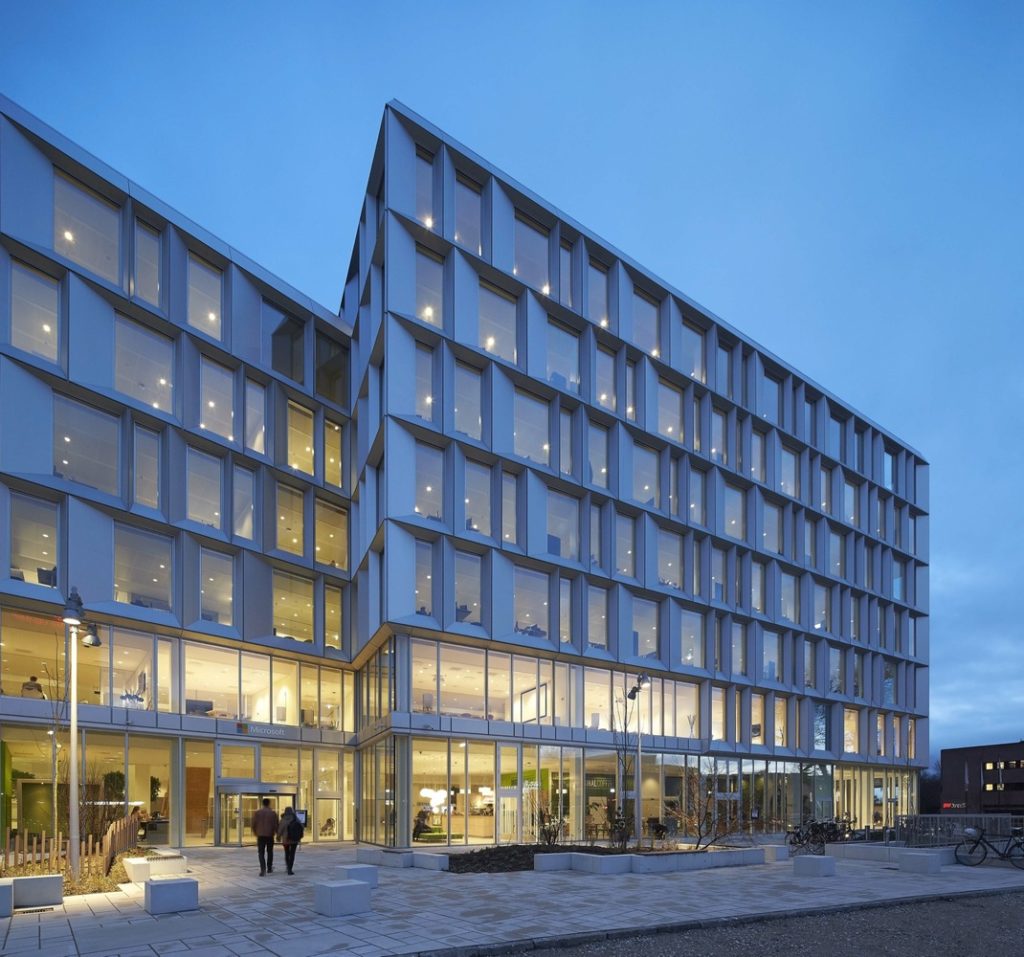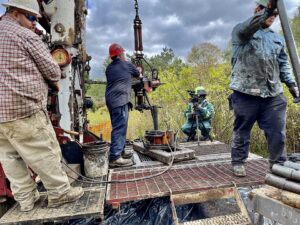Has your community set a goal to go carbon neutral? When you start planning, make commercial LED lighting a priority.
LEDs aren’t just for the lamps in your living room. They can meet pretty much any lighting need your city or town has. They work in office buildings, retail developments, transit centers, hospitals, schools, factories, communal workspaces, show rooms, libraries, and more.
In fact, if a space needs a light, there’s no good reason why it shouldn’t be an LED.
That’s why we’ve teamed up with the LED lighting experts at Alcon Lighting in Los Angeles: to explain the many benefits of commercial LED lighting.
Why Choose Commercial LED Lighting?
LED lighting is popular for some reasons you’d expect, and maybe a couple you’ll find surprising.
LEDs are modern, stylish, and functional. As you can see from these photos, they look as cool in the kitchen at work, pictured above, as they do lighting up building corridors, which is why Sustainable Los Angeles chose them for their space.
But in this day and age of climate change, extreme weather events, and expensive energy, the added bonus of using an LED is that it’s a climate saver.
“An LED light bulb can reduce heat and energy consumption by 90% while increasing color rendering and light quality,” Alcon points out on its website.
Put another way, LEDs are the best way to get the affordable, quality light you want without the climate change or environmental impact you don’t.
LEDs also help keep the air in your communities cleaner.
Most lighting is powered by electricity that’s generated by coal-fired utilities. Burning coal releases carbon dioxide (CO2), one of the major causes of climate change. It also emits tiny toxic pollutants that turn into smog and make our air dirty to breathe. When you use LEDs, you cut the CO2 AND the air pollution.
That, on top of the money saved and the high quality of the light LEDs exude, is why, if your goal really is to have a carbon-neutral city, you actually can’t achieve that goal without switching to commercial LED lighting.
Here’s one additional benefit to LEDs.
If you walk or drive through your community or city at night, how many buildings seem to have every office light turned on, even when no one is there working?
With commercial LED lighting in place rather than old fashioned bulbs, you can reduce energy use in these buildings by 90% – even when the lights are left on (though, of course, we still want them turned off when they’re not in use).
Lighting accounts for almost 20% of the energy a commercial building uses (it’s about 11 percent for residential buildings, which is still a lot!).
Whether you’re building new construction or renovating existing structures, make sure that the architect understands that commercial LED lighting is a top priority. If the architect is not familiar with LED lighting options, the experts at Alcon Lighting can lend some expertise.
By the way, if you’re wondering how LEDs compare to CFLs (compact fluorescents), this post explains:
7 Ways LEDs are Better than CFLs
NOTE: Sponsors like Alcon Lighting help us bring you the expert content you need to lead the greener life you want. All editorial opinions remain our own.





















